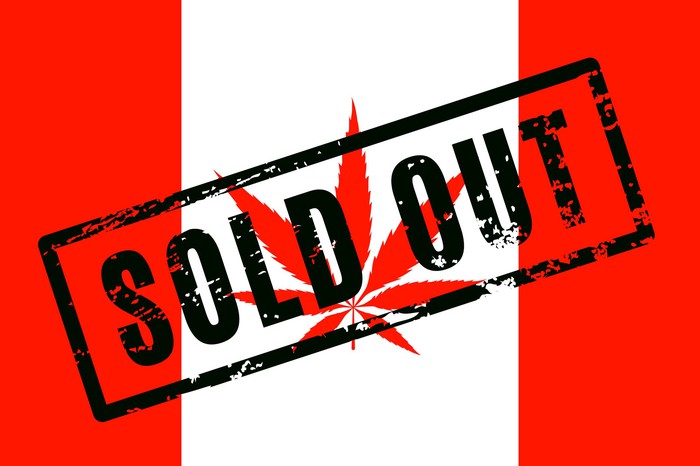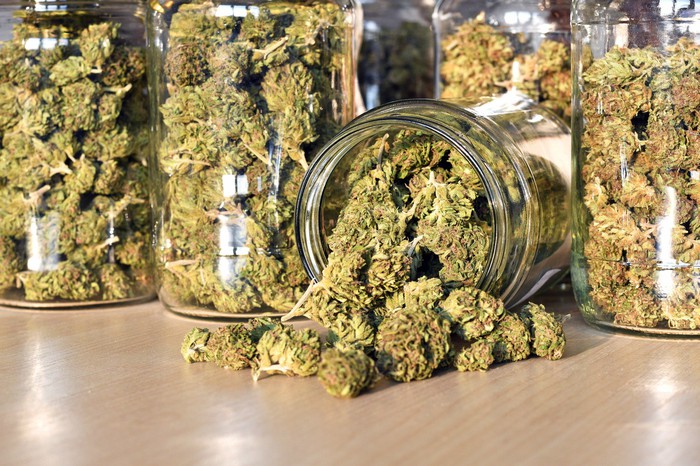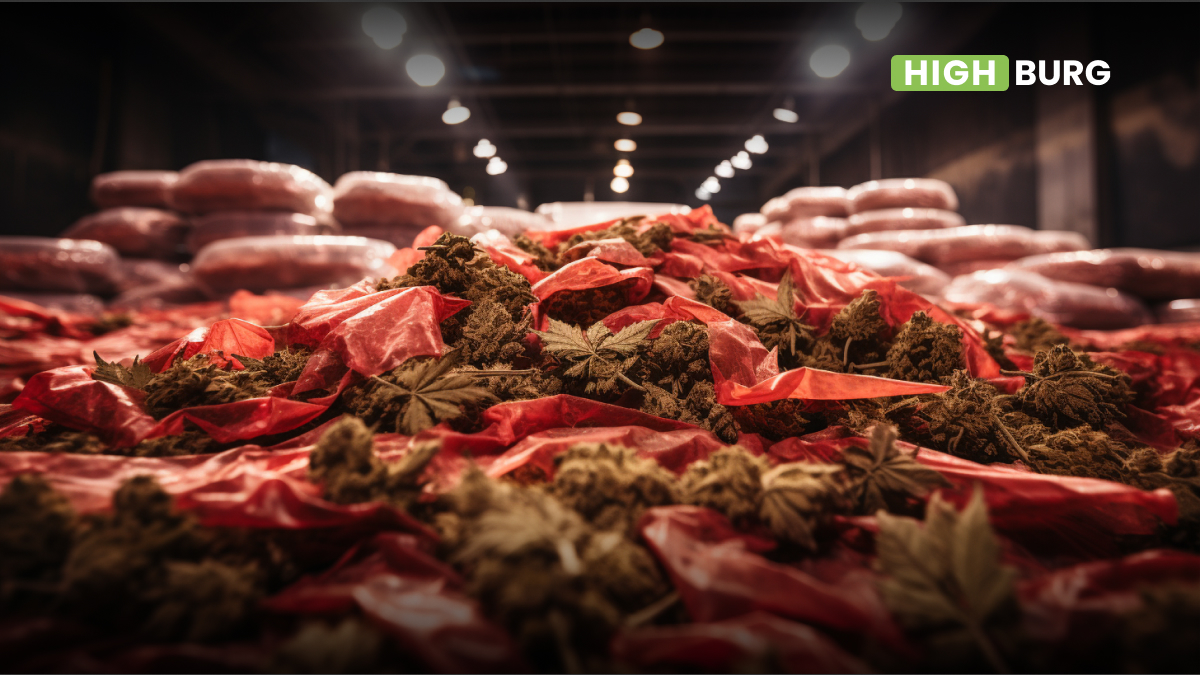Setting the blueprint for this growth in sales is our neighbor to the north, Canada. Even though Canada isn’t expected to come anywhere near the United States in terms of aggregate annual cannabis sales, it became the first industrialized country in the world to green-light recreational marijuana last year. Sales for adult-use cannabis commenced on Oct. 17, 2018.
Canadian weed sales in July hit a new all-time high
How has Canada fared since adult-use weed sales were launched? Let’s take a month-by-month look at licensed-store sales, as recorded by Statistics Canada (all data is reported in Canadian dollars, with U.S. dollar equivalency in parenthesis).
- October: CA$53.68 million ($40.48 million)
- November: CA$53.73 million ($40.52 million)
- December: CA$57.34 million ($43.24 million)
- January: CA$54.88 million ($41.39 million)
- February: CA$51.66 million ($38.96 million)
- March: CA$60.94 million ($45.96 million)
- April: CA$74.58 million ($56.24 million)
- May: CA$85.81 million ($64.71 million)
- June: CA$91.46 million ($68.97 million)
- July: CA$104.5 million ($78.80 million)
As you can see, Canadian licensed-store sales hit an all-time high for the fifth consecutive month in July. It also marked the first time that single-month sales topped CA$100 million, and was a return to sequential monthly double-digit percentage sales growth.
On an aggregate basis, recreational cannabis sales have totaled CA$688.58 million ($519.27 million) since Oct. 17, 2018. Given the steady incline in sales, Canada’s first trailing year of full legalization will likely land between CA$950 million and CA$1 billion. Most forecasts peg Canada for around $5 billion in annual sales (that’s U.S.) within five years.

IMAGE SOURCE: GETTY IMAGES.
Here’s why Canada’s recreational cannabis launch has been a disappointment
Although CA$1 billion in dispensary sales would be nothing to sneeze at in Canada’s first full year as a legalized marijuana market, it’s actually quite disappointing considering the expectations Wall Street, investors, and the pot stocks themselves had coming into this launch. This disappointment can be boiled down to a handful of factors.
For one, regulators have proven ill-prepared to handle the legalization of recreational marijuana. Admittedly, there is no precedent for legalization within an industrialized country, so Health Canada doesn’t deserve all of the blame here. But there’s no denying that it and select provinces have played a key role in minimizing legal marijuana sales.
You see, when the year began, Health Canada had more than 800 cultivation, processing, and sales applications on its desk for review. On average, these reviews were taking many months if not longer than a year to complete, which ultimately kept cultivators, processors, and retailers waiting in the wings to meet demand.
The same can be said for select provinces, which have been slow to approve licenses for physical retail stores. With certain provinces having few physical locations in which to buy marijuana, consumers have been forced to buy online and wait for their product to arrive, or they’ve simply purchased from illicit producers.
There have also been compliant packing shortages throughout Canada. These shortages have left cultivated but unprocessed cannabis sitting on the sidelines.
Even the growers are somewhat to blame. By waiting until the Cannabis Act was a certainty to pass before spending big money on cultivation expansion, most pot stocks are now scrambling to complete grow facilities and get them fully licensed.

IMAGE SOURCE: GETTY IMAGES.
Supply issues won’t be resolved anytime soon
Maybe more worrisome than the subdued launch of recreational marijuana in Canada is that while all of these issues are fixable, none of them are expected to be resolved anytime soon. In fact, Aurora Cannabis (NYSE:ACB), Canada’s largest producer by peak annual output, noted in its fiscal fourth-quarter operating results that it’s done what it can to improve efficiency on its end, but is as the mercy of supply issues that are beyond the company’s control at the moment.
Canada may be a cannabis pioneer that other industrialized countries follow, but its publicly traded pot stocks also have some of the highest premiums thanks to Wall Street’s and investors’ unrealistic expectations built into this next-big-thing investment. This slow start to adult-use pot sales firmly exposes some of the largest and best-known Canadian cannabis stocks to significant downside.
For example, Aurora Cannabis recently wound up missing its own sales guidance that had been issued five weeks prior to its report. The company had also been hinting at recurring positive adjusted EBITDA in Q4 2019 since the beginning of calendar 2019. However, when Aurora reported its fiscal fourth-quarter results, the company’s adjusted EBITDA remained negative. Any hope of near-term profitability for Aurora Cannabis, at least on an operating basis, have been dashed.
Aurora’s peers Canopy Growth (NYSE:CGC) and Cronos Group (NASDAQ:CRON) are even pricier by certain metrics, and may offer considerable downside.

IMAGE SOURCE: GETTY IMAGES.
Canopy’s fiscal first-quarter report was nothing short of a mess, with the company reporting a meager 15% gross margin, as well as mounting losses tied to skyrocketing general and administrative expenses and share-based compensation. Let’s not forget that Canopy Growth also has no permanent CEO after the firing of company visionary Bruce Linton in early July. Linton had served as co-CEO with Mark Zekulin.
Then there’s Cronos Group, which is nowhere near the disaster Canopy Growth is on a bottom-line basis. However, Cronos is reliant on the upcoming launch of derivative products — i.e., edibles, vapes, beverages, concentrates, and topicals. When derivative products hit dispensary shelves in Canada by mid-December, they’re liable to face the same ongoing supply concerns that have impacted dried cannabis. And, to make matters worse, vape health concerns in the U.S. may adversely impact Cronos Group’s vape business.
Suffice it to say that things are headed in the right direction for Canada’s marijuana industry. Unfortunately, things aren’t moving quick enough to satisfy a number of overzealous growth forecasts, and that’s ultimately bad news for Canadian pot stock investors.
Originally posted On: The Motley Fool



